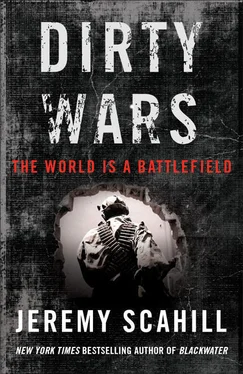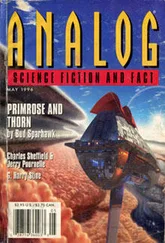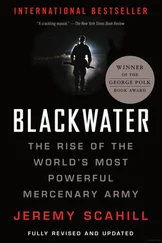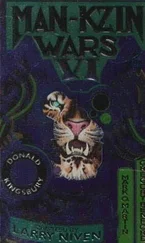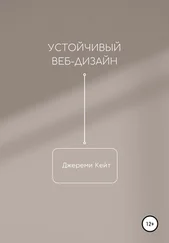Although it got its major kick-start in Iraq, Copper Green predated the 2003 invasion and the intent was for it to go global. The program was “Rumsfeld’s answer to the CIA death squads envisioned by Cofer Black,” reported investigative journalist Jane Mayer. “Members of the squads were given aliases, dead mail drops, and unmarked clothing. They worked in a loose structure outside the Pentagon’s usually rigid chain of command.” Hersh, who first reported the existence of Copper Green in the New Yorker, interviewed several former high-ranking intelligence and military officials about the program. “We’re not going to read more people than necessary into our heart of darkness,” a former high-level intelligence official told Hersh. “The rules are ‘Grab whom you must. Do what you want.’”
When Lieutenant Colonel Shaffer was in Afghanistan, he saw the early stages of Copper Green. It was “authorized,” he said, “but a lot of us felt it wasn’t appropriate and just wasn’t right.” When he visited the task force’s facility in Afghanistan, Shaffer said he was “blown away—and not in a good way—by what I saw.” He described how the building had been “completely gutted. Rooms had been converted into holding cells or open areas, framed in wood and steel.” It was “nothing like the interrogation areas I was familiar with.” The task force’s Copper Green interrogation rooms in Afghanistan, he said, “had holding points for a prisoner’s arms and legs. They were designed for prisoners to be shackled and held in stress positions to maximize discomfort and pain.” “I’d been led into a top-secret interrogation ‘system’ authorized by my boss at the time, Secretary of Defense Donald Rumsfeld, as well as Stephen Cambone, undersecretary of defense for intelligence, permitting highly coercive interrogation techniques on detained personnel in Afghanistan.” As he stood in “the giant facility,” Shaffer recalled, “I could feel a sense of tension in the air—palpable and raw—like walking on a beach before a hurricane is about to hit.” The world knew about Guantánamo and would soon come to know the name Abu Ghraib. Shocking photos would leak into the media that portrayed barking dogs menacing cowering prisoners, pyramids of naked detainees positioned behind smiling guards, the eerie image of a hooded man, standing arms outstretched in a crucifix pose, on a box. The wires attached to his fingers, he was told, would electrocute him if he lost balance and fell. Abu Ghraib would be infamous the world over, but almost no one ever talked about Camp NAMA.

14. “No Blood, No Foul”
IRAQ, 2003–2004—In the first year of the Iraq War, a lot of JSOC’s dirty business went down in a small cluster of buildings nestled in the corner of a Saddam-era military base near the Baghdad International Airport. US Special Operations Forces had taken over the base soon after the March 2003 invasion of Iraq and erected a fence around the cluster of buildings that made up Camp NAMA. At the center of the small compound, surrounded by barbed wire, was the Battlefield Interrogation Facility (BIF).
Members of the JSOC Task Force resided at NAMA, but it was hardly just a dormitory. This task force went by various code names, and the names were frequently changed for operational security and to make investigating it difficult. At various times, it was known as Task Force 20, Task Force 121, Task Force 6-26, Task Force 714 and Task Force 145. Suspected insurgents snatched in house raids or taken off the streets of Iraq cities were brought to NAMA and placed in one of two structures: “Motel 6” was a plywood barracks; “Hotel California” was an actual cellblock that a few months earlier had been used by Saddam’s regime as a prison. The acronym NAMA stood for “Nasty-Ass Military Area.” Its motto, as advertised in posters throughout the camp, was “No Blood, No Foul.” A Defense Department official said it was a play on a task force adage: “If you don’t make them bleed, they can’t prosecute for it.”
To develop their approach to interrogating prisoners they would snatch in Iraq, the Special Mission Units that made up the HVT Task Force worked from a copy of the interrogation standard operating procedure (SOP) that was developed while McChrystal was running the detention and interrogation operations in Afghanistan as part of CJTF 180. According to a Senate Armed Services Committee investigation conducted years later, the Iraq Task Force simply “changed the letterhead, and adopted the SOP verbatim.” The SOP “included stress positions, sleep deprivation, and the use of dogs.” The regime of torture techniques, built up on the demands from Rumsfeld, Cheney and their posses for more results in interrogations, was spreading.
The people taken to NAMA were not given rights as prisoners of war (POWs). They were classified as unlawful combatants. They would not see lawyers, be visited by the Red Cross or be charged with any crimes. Rumsfeld had issued guidelines to JSOC for its own “black” detainee program, which was off-limits to the conventional military. The task force could hold prisoners for ninety days without giving them anything resembling rights or transferring them to above-board military prisons. In effect, this meant that the task force had free rein over the prisoners for three months to squeeze out any information they might have held. Prisoners were often subjected to “beatings, exposure to extreme cold, threats of death, humiliation, and various forms of psychological abuse or torture,” according to Human Rights Watch. Access to NAMA was denied to the Red Cross, lawyers and family members. According to a former interrogator at NAMA, a colonel told him that “he had this directly from General McChrystal and the Pentagon that there’s no way that the Red Cross could get in.” Similarly, army investigators would not be allowed to set foot in Camp NAMA. The task force members were told that such moves were “very necessary for the efficacy of the operation, and we don’t want people to know even our name, of the unit.”
When Colonel Stuart Herrington was deployed by Major General Barbara Fast to investigate conditions at detention facilities and intelligence operations in Iraq in December 2003, he was rebuffed by the task force at NAMA.
So secretive was NAMA that when General Geoffrey Miller, the former commander of the Guantánamo Bay prison, tried to visit, he was not permitted to enter the camp until he took his request all the way up the chain of command. There was a special ID to get into Camp NAMA, and the only people permitted to enter without it were prisoners, shackled and hooded. Ironically, even though NAMA personnel didn’t want General Miller in their camp, the general seemed to be on their side. During that trip to Iraq, while touring other facilities including Abu Ghraib, Miller reportedly chastised US military prison administrators for “running a country club,” charging they were being too lenient on detainees. Miller suggested they “GTMO-ize” their detention facilities and, according to military officials who met with the “GTMO team,” they discussed how using dogs was “effective in doing interrogations with Arabs” because of “Arabs being fearful of dogs.”
The task force at NAMA was run by JSOC, but it was built by pulling personnel from a variety of agencies and units. There were CIA and DIA interrogators, air force interrogators, and a variety of analysts and guards. “They told us we can’t tell our chain of command about who works here or what [the task force] does. You’re completely shut off. You can only discuss it amongst yourselves. That’s what they told us from the very first day,” recalled an interrogator who worked at Camp NAMA in 2003–2004. “It was pretty loose as far as chain of command goes. There was no rank within the task force….We called the colonel by his first name, called the sergeant major by his first name….I couldn’t tell you the sergeant major’s last name if I tried. Same with the colonel. When you asked somebody their name they don’t offer up the last name….The consensus was, more often than not, when they gave you their name it probably wasn’t their real name anyway.”
Читать дальше
